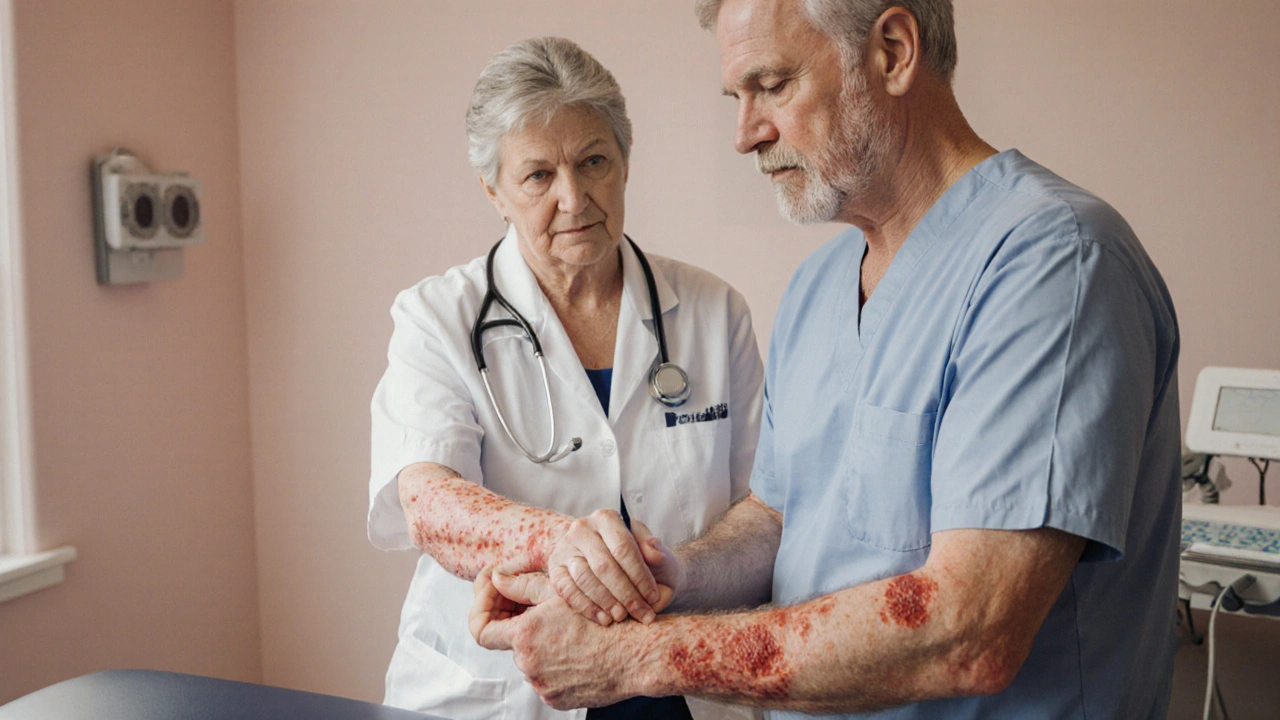Skin Exams: What to Expect and How to Prepare
Ever wondered what really goes on during a skin exam? You’re not alone. Most people think it’s just a quick glance, but there’s a lot more you can learn when you know the basics. In this guide we’ll break down why skin exams matter, what the doctor looks for, and how you can make the visit easy and effective.
Why Skin Exams Matter
A skin exam is your first line of defense against problems like skin cancer, psoriasis, eczema, and other conditions that can show up on the surface. Catching something early usually means simpler treatment and better outcomes. Even if you feel fine, a dermatologist can spot subtle changes that you might miss. This is especially true if you have a family history of skin issues or spend a lot of time outdoors.
Besides spotting disease, a skin exam can give you useful advice on everyday care. Think of it as a personalized health check‑up for your largest organ. The doctor might suggest sunscreen habits, moisturizers, or dietary tweaks that support healthy skin. In fact, a balanced diet rich in anti‑inflammatory foods can calm scaly conditions like psoriasis, as highlighted in our article on nutrition for skin health.
How a Typical Skin Exam Works
When you walk into the clinic, the doctor will usually start with a quick chat. They’ll ask about any new moles, itching, or changes you’ve noticed. This is the time to mention family history, recent sun exposure, or any medications that affect skin.
Next comes the visual inspection. The dermatologist examines your entire body—often with a handheld dermatoscope for a closer look at moles and lesions. Don’t be surprised if they ask you to undress partially; they need a clear view of hidden areas like the back, scalp, and between toes.If something looks suspicious, the doctor may perform a biopsy. This involves taking a tiny piece of skin to send to a lab. It sounds scary, but the procedure is quick, and the results help decide the best treatment plan.
When the exam is over, you’ll get a rundown of findings. If everything looks good, you’ll likely receive a schedule for routine checks—usually once a year for low‑risk patients, or more often if you have risk factors.
Here are three quick tips to help you prepare:
- Bring a list of medications. Some drugs, like certain antibiotics or blood pressure pills, can affect skin appearance.
- Do a self‑check at home. Look for new or changing moles, sores that don’t heal, or patches that itch.
- Wear comfortable clothing. Easy‑to‑remove outfits make the exam smoother for both you and the doctor.
Remember, a skin exam is a partnership. The more information you give, the better the doctor can guide you. If you have questions about specific products—like whether a prescription cream is safe to buy online—our guides on buying medications safely can help you make informed choices.
Bottom line: a skin exam is a simple step that can protect you from big problems down the road. Schedule one today, bring your curiosity, and walk out with a clearer picture of your skin health.
Discover why routine skin exams are vital for plaque psoriasis patients, how often to schedule them, warning signs to watch, and tips for making the most of each dermatologist visit.
Recent-posts
Categories
Tags
- online pharmacy
- side effects
- online pharmacy UK
- generic drugs
- Tadalafil
- arthritis medication
- buy medication online
- prescription medication
- motion sickness
- Sildenafil
- Vardenafil
- ED medication alternatives
- drug interactions
- drug safety
- opioid side effects
- generic medication prices
- brand drugs
- premenstrual dysphoric disorder
- sleep quality
- PMDD






